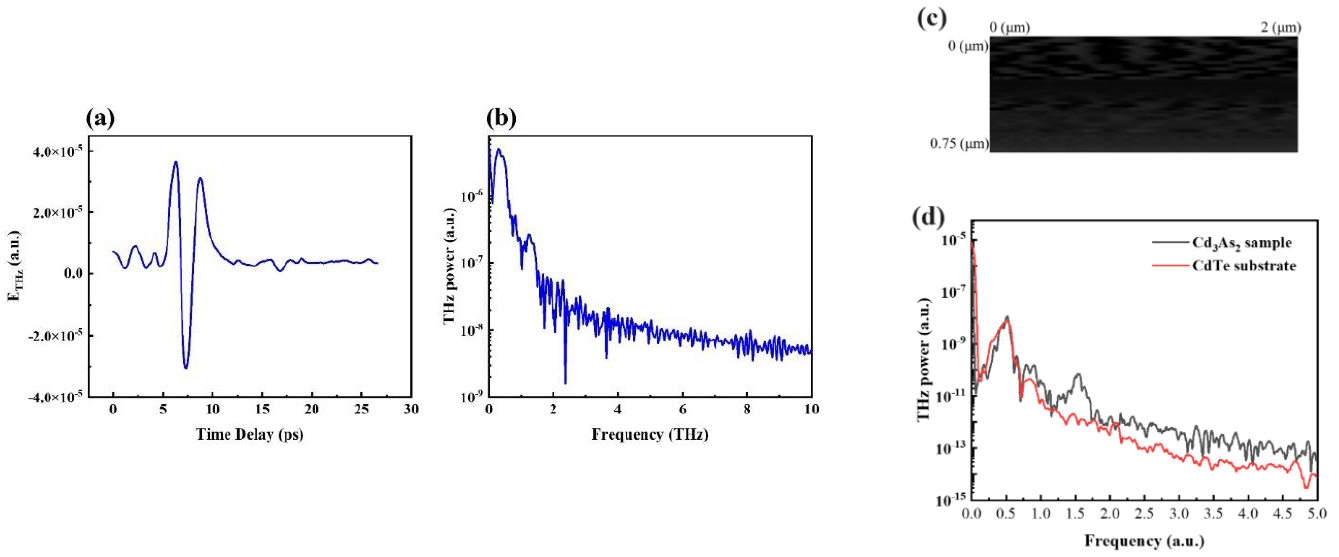| PREVIOUS PRESENTATION | BACK TO PROGRAM OVERVIEW | NEXT PRESENTATION |
Micro-nano scale THz nonlinearity excited by femtosecond laser filamentation
Weiwei Liu*, Zeliang Zhang, and Xingyou Li
Institute of Modern optics, Nankai University, Tianjin, 300350 China
*liuweiwei@nankai.edu.cn
THz s-SNOM is useful for excitation and characterizing the multiple sample surfaces’ transient response and high spatial resolution features. However, the power of most THz sources is rather weak compared to the infrared and visible sources. In addition, THz nanotips’ near-field couple and scattering efficiency is not optimistic, since the standard AFM nanotips have a typical length of ~20 μm, which is subwavelength-scale at THz frequency. Most commercial THz s-SNOM equipment is based on CW THz source (QCL laser, CO2 laser, free-electron laser) or narrow band THz source (photoconductive antenna) [1]. High power CW THz source (QCL laser, CO2 laser) has been used to build the THz s-SNOM system, however, the CW THz sources are not equipped with temporal resolution ability. The photoconductive antenna is an appropriate pulsed THz source with time resolution ability and its high repetition is very suitable for the demodulation of near-field signals. However, its low pulse energy can’t support near-field THz nonlinear experiments, as the low THz intensity can’t cause nonlinearity in the materials. High-power THz radiation generated by two-color femtosecond laser filament has attracted extensive attention due to its unique advantages, including ultrabroad bandwidth, ultrahigh peak intensity, and ultrashort duration [2]. In this letter, we precisely control the polarization, peak intensity, and spatiotemporal walk-off between the fundamental wave (FW) and the second harmonic wave (SH) and modify the filament length to optimal state to produce high-peak-power THz source based on table femtosecond laser amplifier. This letter introduces these high-power sources (the energy is mainly concentrated around 0.5 THz) into the THz s-SNOM system aiming at combining the high-power THz source and the THz s-SNOM system. This system has high spatial and temporal resolution and the high electric field strength can induce nonlinearity in materials, which can characterize the nonlinear response of low dimensional materials in the THz band at the nanometer scale.

Figure 1: (a) THz pulse waveform produced by femtosecond laser filamentation and (b) corresponding spectrum. (c) AFM topography and the s-SNOM image of the Cd3As2 sample (d) with second-harmonic generated.
References
[1] Tyler L. Cocker, Vedran Jelic, Manisha Gupta, Sean J. Molesky, Jacob A. J. Burgess, Glenda De Los Reyes, Lyubov V. Titova, Ying Y. Tsui, Mark R. Freeman & Frank A. Hegmann. An ultrafast terahertz scanning tunnelling microscope. Nature Photonics, 7, 620-625 (2013)
[2] Zhiqiang Yu, Nan Zhang, Jianxin Wang, Zijie Dai, Cheng Gong, Lie Lin, Lanjun Guo, Weiwei Liu, 0.35% THz pulse conversion efficiency achieved by Ti:sapphire femtosecond laser filamentation in argon at 1 kHz repetition rate. Opto-Electron Adv 5, 210065 (2022)
